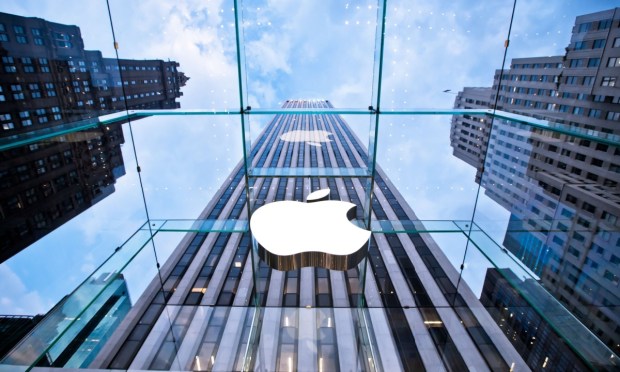Apple’s Quarter Beat Muted Expectations, but China and AI Battlefields Loom Large

The bar was, arguably, low coming into Apple’s latest earnings report.
And the tech giant stepped over that bar, spurring investors to breathe a sigh of relief, sending shares up 6% higher in the wake of the post-earnings-close announcement.
Yes, the decline in sales — at 4% — was better than some had feared.
And yes, it can be argued that the greater China region, or at least mainland China, has been doing better than some might have expected. At least in the quarter, and at least in terms of iPhone sales.
But in the current environment, where earnings reports have been dominated by artificial intelligence (AI) pretty much everywhere you’ve looked, Apple’s own efforts are further out on the horizon than Big Tech peers.
And the competitors are getting only, well, more competitive.
As reported as recently as this week, Samsung overtook Apple to become the world’s highest-volume seller of smartphones in the first quarter, driven in part by AI and premium offerings.
Apple’s own AI launches have been rumored to be on tap, with announcements likely at the company’s Worldwide Developers Conference in June.
During the company’s May 2 conference call with analysts, CEO Tim Cook stated that “We continue to feel very bullish about our opportunity in generative AI. We are making significant investments, and we’re looking forward to sharing some very exciting things with our customers soon.”
The Here and Now
As for the second fiscal quarter, the story’s a bit bifurcated: On the one hand, lumpy hardware results; on the other hand, some tailwind in services.
Apple’s services growth accelerated to 14% year over year, to $23.9 billion, where that rate had been 11% in the most recent, second quarter of the fiscal year.
And management emphasized continued progress in subscriptions and consumers’ willingness to pay for various media, streaming and app offerings. Emerging markets outside of China also offer growth opportunities, according to management.
Puts and Takes in Hardware
iPhone revenues were $40 billion, down 10%, offering at least some headwind to consolidated sales, which were 4% lower to $90.8 billion. The Street had been expecting $90.1 billion.
“We still saw growth in the iPhone in some markets, including mainland China,” Cook said, as sales from the greater China market were 8% lower than a year ago. In response to analysts’ questions about China, Cook said, “What we saw was an acceleration from Q1, and it was driven by iPhone. … The other products didn’t fare as well, and so we clearly have work there to do. I think it has been and is, through last quarter, the most competitive market in the world.”
Company materials revealed that sales in Europe were slightly higher, overall, to $24.1 billion.
The company’s iPad revenues slipped 17%. Wearables revenues declined 10%, to $7.9 billion on difficult comps.
Mac-related revenues were $7.5 billion higher, up 4% from last year.
CFO Luca Maestri said on the call that the $23.9 billion in services revenues represented a record, as “both transacting accounts and paid accounts reached new highs, with paid accounts growing double digits year over year. And paid subscriptions showed strong double-digit growth.”
The tally is now that there are more than 1 billion subscriptions tied to services on the company’s platform, which the CFO said, “has more than doubled the number that we had only four years ago.”
The company expects that June quarter total company revenue will grow low single digits year over year.
“We expect our services business to grow double digits at a rate similar to the growth we reported for the first half of the fiscal year, and we expect iPad revenue to grow double digits,” Maestri said.
During the question and answer session with analysts, Maestri said that the growth outlook is underpinned by the services segment.
There was brief discussion on the changing regulatory landscape confronting Apple: Asked on the call about developments in the European markets, where opening up the third-party App Store via the European Digital Markets Act poses some security risks, and lower payments from developers, Cook said, “it’s too early to answer the questions” on impact, while “we’re focused on complying while mitigating the impacts to user privacy and security.”
Maestri said on the call that within hardware, “We continue to see a lot of interest at the top of the range of our products. And I think it’s a combination of consumer wanting to purchase the best products that we offer in a different category and our ability to make those purchases more affordable over time.
“We’ve introduced several financing solutions from installment plans to trading programs, which reduce the affordability threshold and therefore, customers tend to buy want to buy at the top of the range.” Those financing and installments, he said, are proving to be valuable in emerging markets.
The executives stated on the call that they remain comfortable with channel inventory in terms of hardware.
The quarter’s over, the commentary’s been proffered. June looms as the next “tell” on how Apple will join the battle more fully on AI, while continuing to navigate the challenges in the competitive markets in Asia and the regulatory landscape that seems to be continuously evolving.

